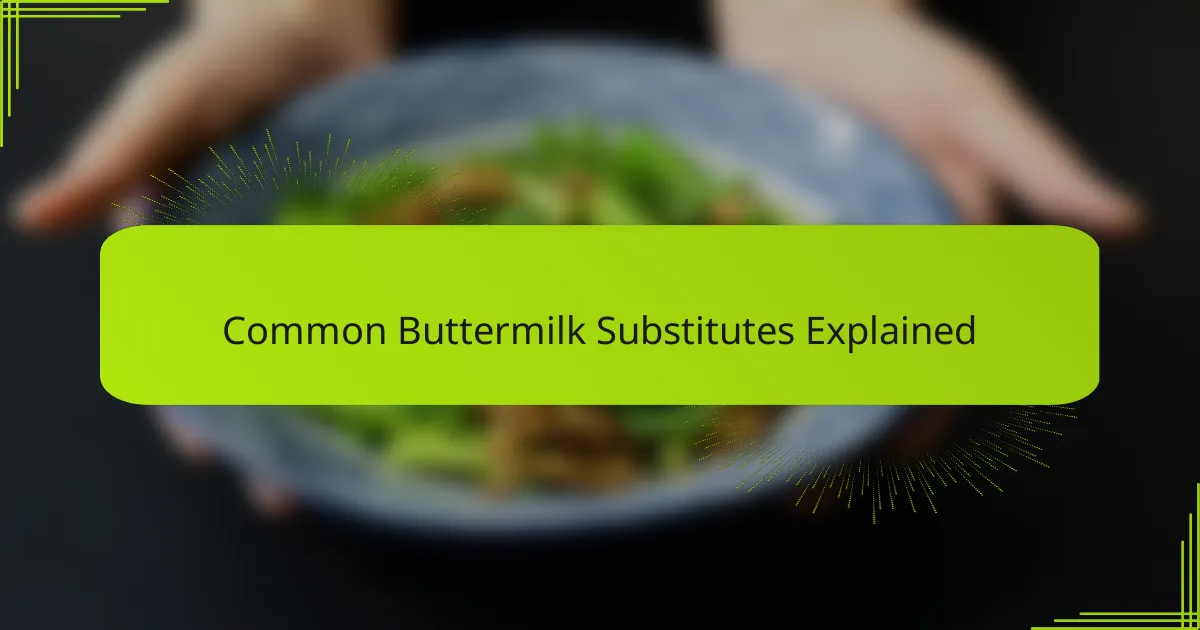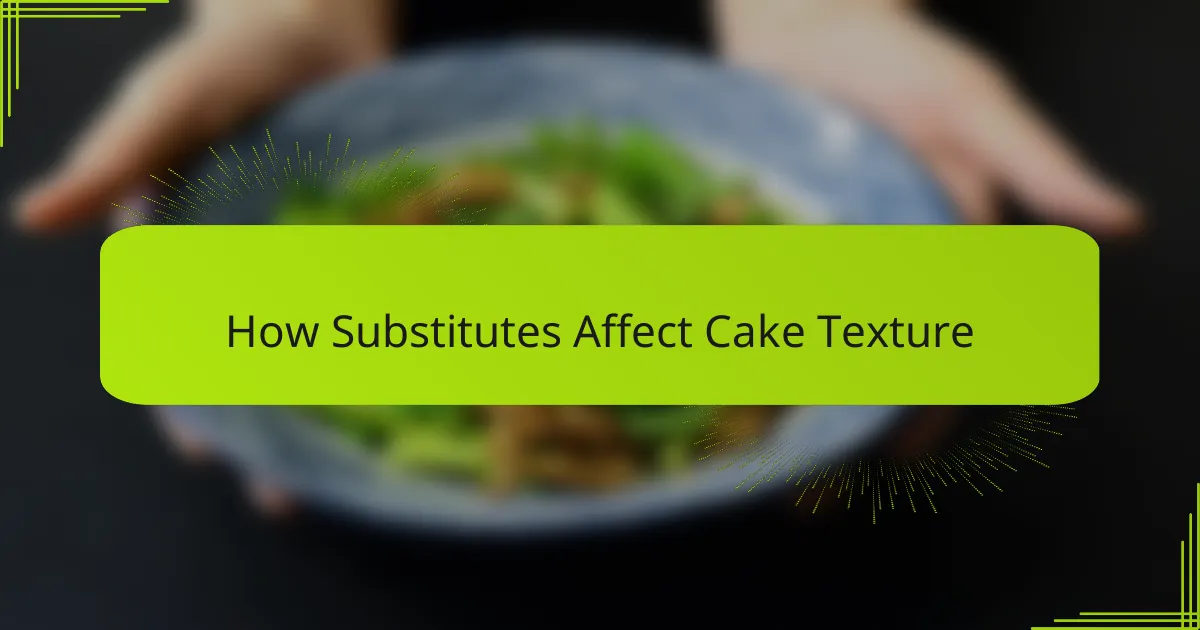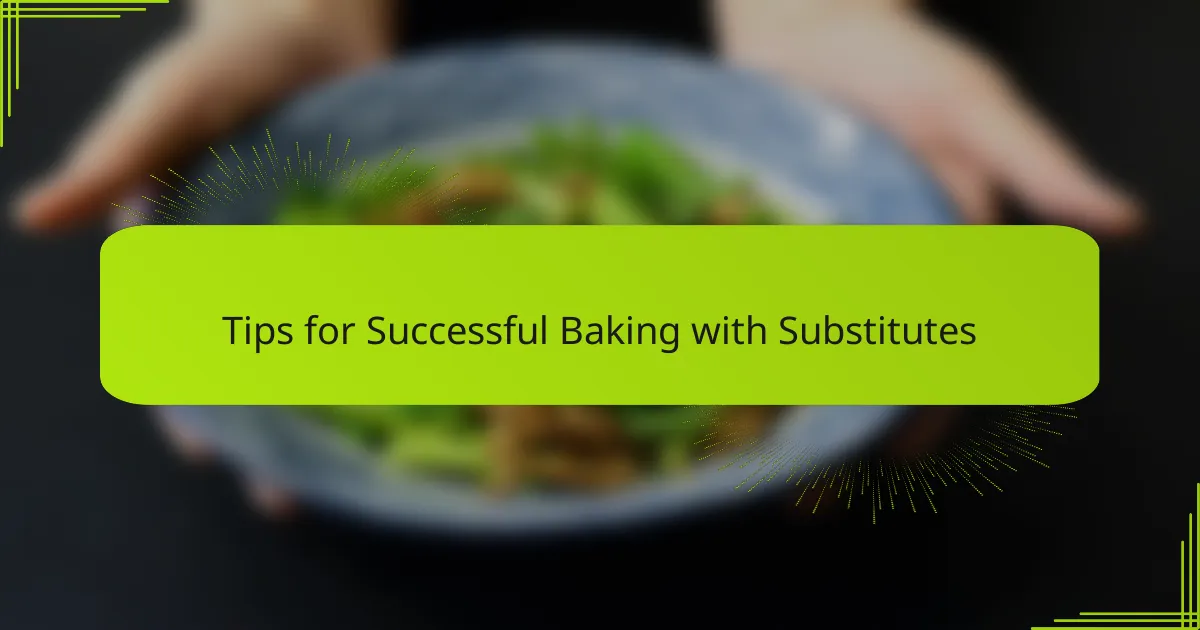Key takeaways
- Buttermilk enhances cake texture and flavor through its natural acidity, creating light and fluffy cakes.
- Common substitutes like milk with lemon juice or yogurt can mimic buttermilk’s properties, influencing cake density and moisture.
- Understanding the chemistry of baking allows for confident experimentation with substitutes, enhancing the overall baking experience.
- Attention to detail, such as measuring substitutes and adjusting baking soda, is crucial for achieving the desired cake texture.

Understanding Buttermilk and Its Role
Buttermilk, to me, is much more than just an ingredient; it’s the quiet hero that transforms a cake’s texture and taste. Its natural acidity reacts with baking soda, creating tiny bubbles that make cakes light and fluffy. Have you ever wondered why some cakes just melt in your mouth while others feel dense? That’s often the magic of buttermilk at work.
From my experience, buttermilk adds a subtle tang that brightens the flavor without overpowering it. It’s interesting how such a simple ingredient can balance sweetness and add depth. I remember the first time I baked a cake without it—I missed that tender crumb and delicate taste that only buttermilk brings.
I often think about what exactly makes buttermilk so special in baking—beyond its flavor, it’s the way it interacts chemically. This interaction helps to tenderize gluten, which gives cakes that soft, moist texture we all love. Isn’t it fascinating how science and cooking blend together in your kitchen?

Common Buttermilk Substitutes Explained
When I can’t find buttermilk, I usually reach for a simple substitute: milk mixed with either lemon juice or vinegar. It’s amazing how adding just a tablespoon of acid to a cup of milk mimics buttermilk’s tang and acidity, helping the batter rise beautifully. Have you ever tried this hack? It’s saved me more than once when the fridge was bare.
Another go-to for me is plain yogurt or sour cream diluted slightly with water. These alternatives bring that same creamy, tangy note and moisture but with an even richer texture. I find that cakes made with yogurt tend to be extra soft, almost melt-in-your-mouth, which is such a treat when you want something luscious yet simple.
Sometimes I wonder why these substitutes work so well. It’s all about that acid reacting with baking soda, just like real buttermilk. Understanding this chemistry made me feel more confident experimenting—and honestly, it turned baking into a mini science adventure in my kitchen. Wouldn’t you agree that knowing why something works makes it more fun to try?

How Substitutes Affect Cake Texture
When I first switched to a buttermilk substitute in my favorite cake recipe, I immediately noticed the texture was a bit different—less airy and slightly denser. It made me realize just how much the acidity in real buttermilk helps create those delicate air pockets that give cakes their tender crumb. Have you ever bitten into a cake that felt heavy? That’s often the subtle result of skipping the right acid in the mix.
Using yogurt as a substitute, I found the texture becomes incredibly moist but with a bit more richness, almost like the cake hugs your taste buds. It’s fascinating how the fat content and creaminess in these alternatives can compensate but simultaneously shift the cake’s feel. Sometimes this change is exactly what I want, especially when craving something more decadent.
On the other hand, when I use milk with lemon juice or vinegar, the texture is closer to the traditional buttermilk effect but can occasionally lean towards a slightly coarser crumb. I ask myself, is it worth that minor trade-off for the convenience? For me, understanding these nuances lets me choose the substitute based on the occasion—whether I’m after lightness or richness, texture matters as much as flavor.

Choosing the Right Substitute for Your Cake
Choosing the right substitute for buttermilk in your cake really depends on what texture and flavor you’re aiming for. I’ve found that when I want a light, fluffy crumb, milk with lemon juice or vinegar usually does the trick. Have you ever noticed how just a small change in acidity can make your cake rise perfectly or fall flat?
Sometimes, I crave a cake that’s extra moist and rich, so I opt for yogurt or sour cream instead. These alternatives give that luscious, tender bite that feels like a comforting hug with every mouthful. Do you think the slight shift in texture is worth the added creaminess? For me, it often is.
It’s not just about convenience, either—it’s about understanding what each substitute brings to the table. I remember a time when I grabbed the wrong substitute and ended up with a denser cake than expected. That mistake taught me to ask myself: am I baking for lightness, richness, or a balance of both? Knowing the answer guides my choice every time.

My Experience Using Substitutes in Cakes
I’ve experimented with various buttermilk substitutes in my cakes, and each time feels like a small discovery. Once, I swapped in that milk-and-lemon-juice combo on a whim, and while the cake rose nicely, I noticed it lacked the subtle tang I usually expect. Have you ever been surprised by how a tiny change in ingredients can affect the whole baking experience?
Another time, I used plain yogurt as a substitute, hoping for extra moisture. The result was a cake so soft it practically melted on my tongue—richer than usual but incredibly satisfying. That moment made me appreciate how these substitutes don’t just replace buttermilk; they bring their own unique character to the bake.
Sometimes, I do wonder if using these alternatives is a perfect fix or just a compromise. For me, it’s become less about finding an exact match and more about embracing the little differences each substitute offers. Have you found that playing with ingredients like this can turn baking into a fun, creative experiment rather than a strict recipe? I definitely have.

Tips for Successful Baking with Substitutes
One tip I always keep in mind is to measure your substitutes precisely. It might seem trivial, but even a small imbalance in acidity or liquid can throw off the cake’s texture. Have you ever had a cake turn out flatter or denser than expected? For me, attention to these little details makes a big difference in the final bake.
Another thing I’ve learned is to adjust baking soda amounts when using substitutes. Since the acidity levels can vary, I sometimes tweak the baking soda just slightly to keep that perfect rise and tenderness. It’s a bit like fine-tuning an instrument—once you get it right, baking feels almost effortless.
Lastly, I find that giving the batter a little extra rest time can help when using substitutes. Letting the acid and soda react gently before baking often results in a fluffier texture. Have you ever tried this? It’s a small step, but it honestly feels like a secret weapon in my baking playbook.




